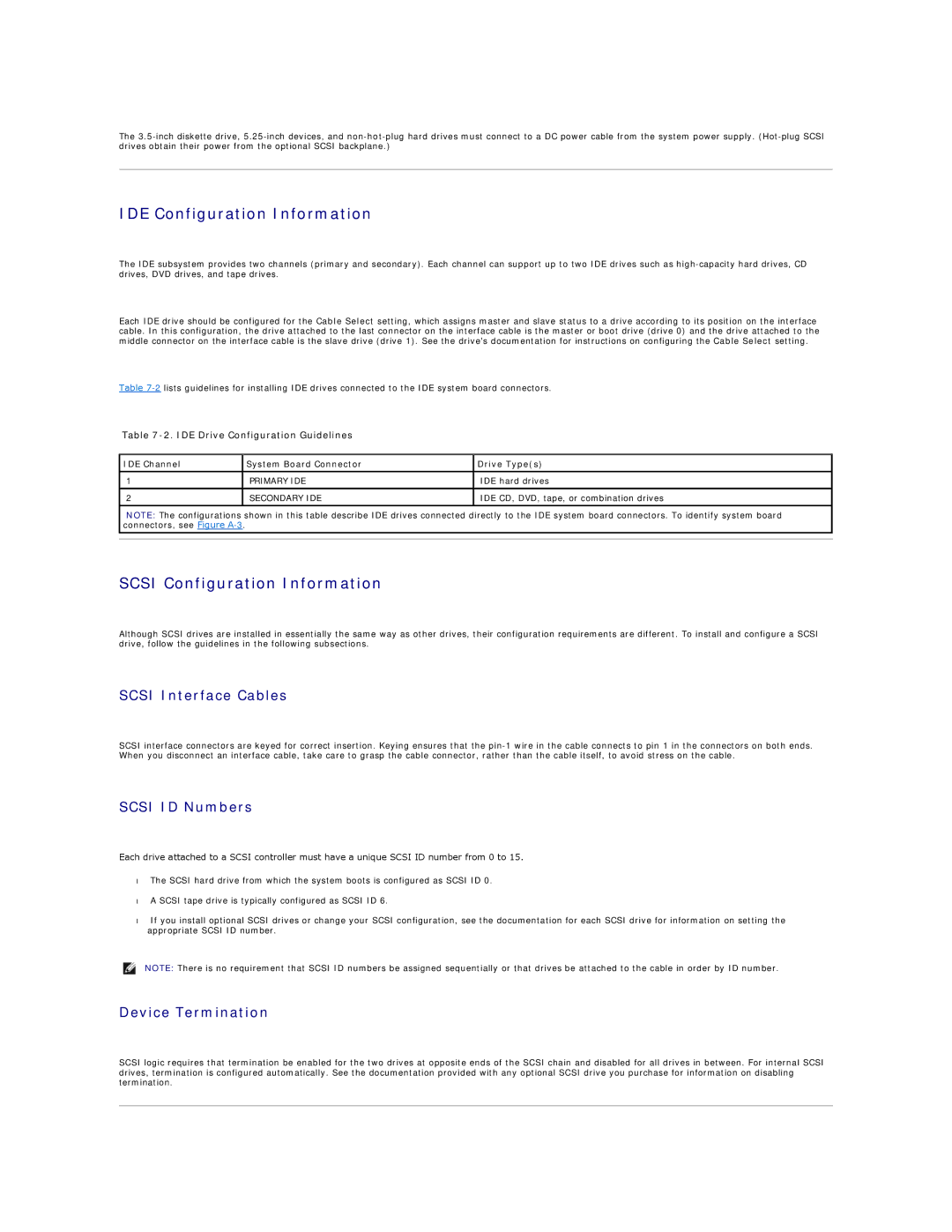
The
IDE Configuration Information
The IDE subsystem provides two channels (primary and secondary). Each channel can support up to two IDE drives such as
Each IDE drive should be configured for the Cable Select setting, which assigns master and slave status to a drive according to its position on the interface cable. In this configuration, the drive attached to the last connector on the interface cable is the master or boot drive (drive 0) and the drive attached to the middle connector on the interface cable is the slave drive (drive 1). See the drive's documentation for instructions on configuring the Cable Select setting.
Table
Table 7-2. IDE Drive Configuration Guidelines
IDE Channel | System Board Connector | Drive Type(s) |
|
|
|
1 | PRIMARY IDE | IDE hard drives |
|
|
|
2 | SECONDARY IDE | IDE CD, DVD, tape, or combination drives |
|
|
|
NOTE: The configurations shown in this table describe IDE drives connected directly to the IDE system board connectors. To identify system board connectors, see Figure
SCSI Configuration Information
Although SCSI drives are installed in essentially the same way as other drives, their configuration requirements are different. To install and configure a SCSI drive, follow the guidelines in the following subsections.
SCSI Interface Cables
SCSI interface connectors are keyed for correct insertion. Keying ensures that the
SCSI ID Numbers
Each drive attached to a SCSI controller must have a unique SCSI ID number from 0 to 15.
•The SCSI hard drive from which the system boots is configured as SCSI ID 0.
•A SCSI tape drive is typically configured as SCSI ID 6.
•If you install optional SCSI drives or change your SCSI configuration, see the documentation for each SCSI drive for information on setting the appropriate SCSI ID number.
NOTE: There is no requirement that SCSI ID numbers be assigned sequentially or that drives be attached to the cable in order by ID number.
Device Termination
SCSI logic requires that termination be enabled for the two drives at opposite ends of the SCSI chain and disabled for all drives in between. For internal SCSI drives, termination is configured automatically. See the documentation provided with any optional SCSI drive you purchase for information on disabling termination.
